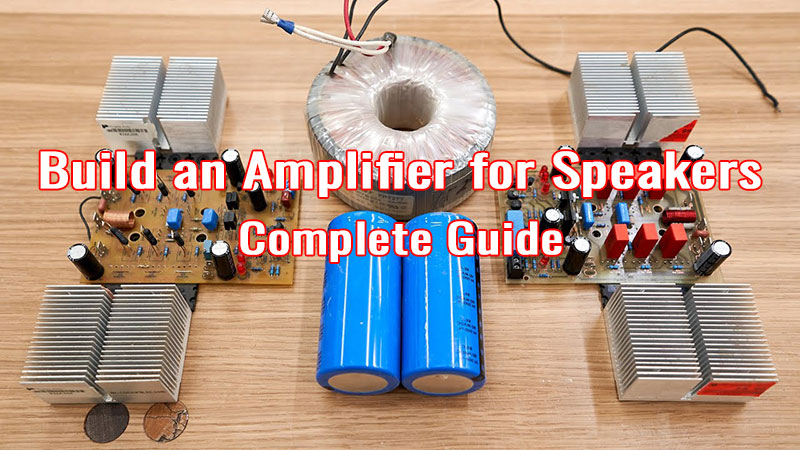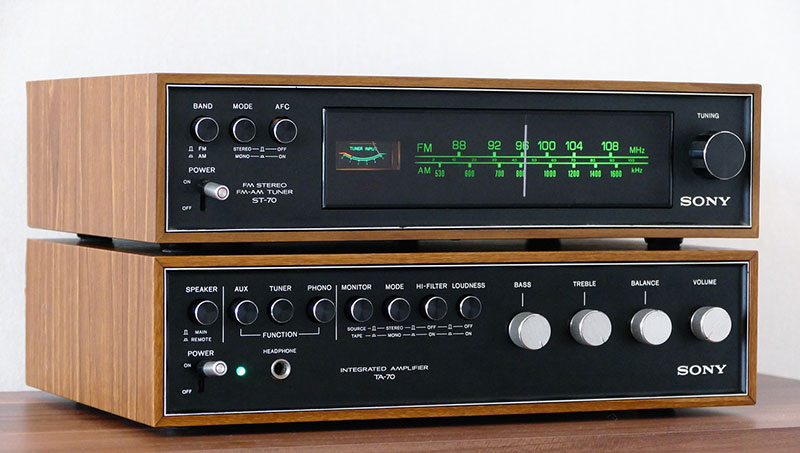How to Build an Amplifier for Speakers (Easy Guide)
Building an amplifier is a great way to get more power and volume out of your speakers. If you’re looking to build an amplifier for your home stereo system, there are a few things you’ll need to know.
With a little know-how, you can build an amplifier that will give your speakers the power they need to really rock. So let’s get started!

How to Build an Amplifier for Speakers
There are a few different ways to build an amplifier, but we’ll be discussing the easiest and most feasible method to do at home. We’ll also be discussing about the supplies you need, how to wire the components, and finally, how to test your DIY speakers’ amplifier.
Gather the Necessary Supplies
- Speaker
- Battery
- Aux cable
- Amplifier module
- Charging module
- On/Off switch
- Speaker wires
- Smaller connector wires
- Solder and solder wire
- Small pieces of cardboard
Assemble the Amplifier
Make a small box for the amplifier using cardboard pieces. Cut out the holes for the charger, the on-off switch, and the Aux cable on one face of the box. Cut out the speaker hole at the center of the top face of the box.
Glue the Speaker in Place.
Solder negative and positive speaker wires to the negative and positive posts of the speaker. Solder the other ends of the speaker wires to the positive and negative output connections of the amplifier module.
Fix the on-off Switch to the Box.
- Insert the Aux cable leaving the end to connect to your device on the outside.
- Cut the other end of the AUX cable to expose the three internal wires.
- Solder the three wires on the input connector points of the amplifier module.
- Connect the positive and negative ends of the ON/OFF switch with the amplifier module’s positive and negative switch connectors.
- Cut in half the wire connecting the negative end of the switch to the negative connector of the amplifier module.
- Solder the exposed ends of the wire to the positive and negative ends of the battery.
- Solder another pair of wires on the negative and positive ends of the battery and to the positive and negative connectors of the charger module.
- Fix both modules as well as the battery into the amplifier box.
- Close up your amplifier box, and your DIY speaker amplifier will be ready to use.
Test the Amplifier
First, test if the amplifier is charging by connecting the charger to the port on the box where the charger module is installed.
Next, turn on the amplifier and connect the end of the AUX cable on the outside to your device.
Play some audio, and hear if you can get the sound from the amplifier
If the sound doesn’t come out of the amplifier, you probably have a loose connection that you need to fix.
Is it Cheaper to Build an Amp for your Speakers?
Are you looking to save money on your next audio upgrade? Then you might be wondering if it’s cheaper to build an amp for your speakers.
The answer, unfortunately, is not so simple. It all depends on a number of factors, including the cost of the components, your level of expertise, and the amount of time you’re willing to put into the project.
If you’re just starting out and don’t have much experience with electronics, then it’s probably not worth your time trying to build an amp. You’re better off buying a ready-made one.
However, if you’re an experienced electronics hobbyist, then you might be able to save some money by building your own amp.
Just be sure to factor in the cost of the components and your time before you make a decision.
How to make an Amplifier without IC?

If you want to make an amplifier without using an IC, you will need to use a transistor, capacitor, and resistor. You will also need to know how to wire these components together.
The first step is to choose the transistor you will use. A transistor is a crucial element in many amplifier circuits. It takes a weak signal, passes it through a base junction, and amplifies and strengthens it.
When designing an amplifier, it’s essential to choose a transistor that will meet the specific needs of the circuit. To do this, you will need to determine the collector current, base current, and emitter current for the transistor you are considering.
Once you have these values, you can compare them to the specifications for the transistor to see if it is a good fit for the amplifier circuit. If not, you can continue searching for a transistor that will better meet the needs of the circuit.
Two examples of perfect transistors for speaker amplifiers are the B817 transistor and the d882 transistor.
The next step is to choose the right capacitor. The capacitor must be able to hold a charge, so it’s crucial to choose one with a high voltage rating.
Lastly, you will need to choose the right resistor. Resistors are used to control the current flowing through the transistor. The size of the resistor will depend on the current you want to flow through the transistor.
With these components, it’s possible to make an amplifier without an IC:
- First, you need to connect the sound source to the base of the transistor.
- Then, connect the capacitor to the collector of the transistor.
- Finally, connect the resistor to the emitter of the transistor.
However, it should be noted that this will likely be a more difficult task than using an IC.
Can you use an AC Receiver in Place of a Speaker’s Amp?
The short answer is yes; you can use an AC receiver instead of a speaker’s amplifier.
However, there are a few things you need to keep in mind before using this setup.
- First, an AC receiver is not designed to drive a speaker at high volumes. So if you’re looking to use an AC receiver in place of a speaker’s amplifier, you’ll need to ensure the receiver can handle the speaker’s wattage.
- Second, an AC receiver does not have the same features as a speaker’s amplifier. For example, a speaker’s amplifier may have bass and treble controls that an AC receiver does not.
- Third, an AC receiver may not have the same power output as a speaker’s amplifier. So if you’re looking to use an AC receiver in place of a speaker’s amplifier, you’ll need to consider the size of the speakers.
Do All Speakers Need Amplifiers?
Most speakers on the market are passive, which means they don’t have a built-in amplifier. This means you’ll need to connect them to an external amplifier or receiver to boost the sound.
On the other hand, active speakers have amplifiers built-in, so you don’t need to worry about connecting them to anything else.
The Bottom Line
Amplifiers for speakers can be built relatively easily at home with a few simple tools and supplies. This project is a great way to improve the sound quality of your audio system without spending a lot of money.
But before you go off and start building one, there are a few things you should keep in mind.
First, make sure you have all the right tools and materials. Second, be careful not to electrocute yourself. Third, practice soldering before you try it on your amplifier. And finally, have fun!